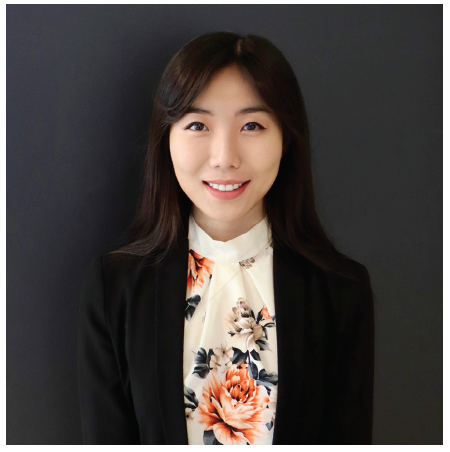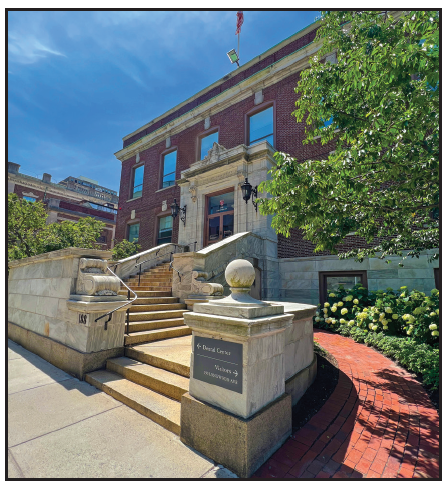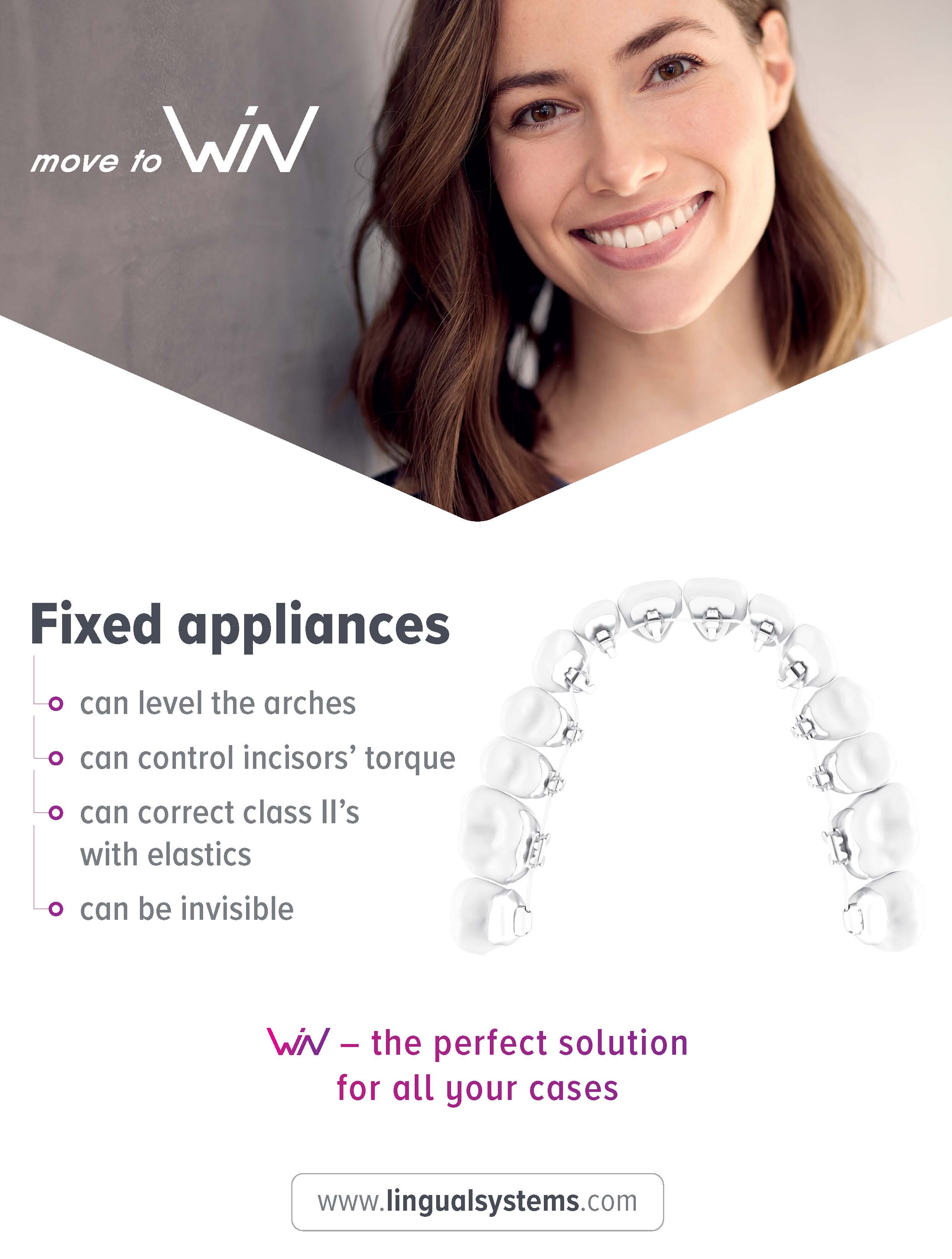2024 Eugene L. Gottlieb JCO Student of the Year: Dr. Grace Huang
The Journal of Clinical Orthodontics is pleased to name Dr. Grace Huang from the Harvard School of Dental Medicine as the winner of the 2024 Eugene L. Gottlieb JCO Student of the Year Award, presented by American Orthodontics. Dr. Huang was selected over 19 other students from schools around the United States and Canada in a two-stage, months-long competition judged by members of the JCO editorial board. Her prize includes more than $8,000 worth of materials and travel from American Orthodontics, JCO, and Dolphin.
Dr. Huang is the ninth Student of the Year award winner, joining Dr. Bianca Lau of the University of the Pacific (2023), Dr. Shelby Steffenhagen of the University of Texas Health San Antonio (2022), Dr. Amanda Gross of Texas A&M University (2021), Dr. Saro Atam of Stony Brook University (2020), Dr. Katya Skillestad of Texas A&M University (2019), Dr. Samaneh Mojarrad of the University of Pennsylvania (2018), Dr. Moataz Elmahdy of the University of Rochester (2017), and Dr. Krystian Jarosz of Rutgers University (2016). Eight different schools have thus been recognized to date.
Any U.S. or Canadian orthodontic department was eligible to nominate one current student by submitting two letters of recommendation and the student’s personal essay. Each student was then given the materials from an unpublished case and asked to write a complete treatment plan, including all possible alternatives, within two weeks. Three JCO editorial board members narrowed the initial group of 20 nominees down to 12 finalists in December. In the second stage, each of the finalists submitted an ABO-style case report. The judging panel included Dr. John Graham of Salt Lake City; Dr. Neal Kravitz of South Riding, Virginia; Dr. Michael Meru of Thousand Oaks, California; Dr. Sarah Shoaf of Winston-Salem, North Carolina; and Dr. Peter Sinclair of Los Angeles.
As in past years, the judges were highly impressed by the quality of submissions. JCO will publish Dr. Huang’s case report as an online-only article in an upcoming issue. All 12 finalists will be featured on our Facebook page in the coming months.
Congratulations to Dr. Huang and the Harvard School of Dental Medicine! Current orthodontic students and faculty can expect the start of the 2025 nomination process in August.
PHILIP B. VOGELS
President, JCO, Inc.
Q&A with Dr. Grace Huang
Can you tell us a little about yourself?
My parents and I immigrated to the U.S. when I was 6 years old. They held two full-time jobs each, working tirelessly to support our family and establish roots in Boston, which pushed me to develop a sense of responsibility and self-motivation. Twenty years later, my dad is a general dentist, my mom is his assistant, I’m nearly an orthodontist, and my younger sister wants to be a predental major when she starts college next year! Outside of dentistry, one of my greatest passions is singing. Throughout college and dental school, I performed opera as a coloratura soprano, was lead singer in a pop-rock band, and served as president of SoundBites, Penn Dental’s premier a cappella group. During the pandemic, I also started a YouTube singing channel, where I cover a diverse range of musical genres, from opera and musical theater to Disney classics and Whitney Houston hits! Aside from the performing arts, I have also been committed to martial arts since middle school, helping teach kickboxing classes and lead karate training at the college and graduate levels. I also enjoy practicing the ukulele, trying new restaurants, playing board games, dancing, and spending time with family.

Dr. Grace Huang
Why are you pursuing a career in orthodontics?
During my elementary and middle school years, my mom worked as an orthodontic assistant, granting me access to orthodontic treatment we otherwise wouldn’t have been able to afford at that time. She would put me to bed every night by sharing her dream of me becoming an orthodontist one day. As the first one in my immediate family to apply to college in America, determined to secure my path toward orthodontics, I applied almost exclusively to combined programs. Fortunately, I was able to join the University of Pennsylvania’s seven-year Bio-Dental submatriculation program, and I’m now finishing up my orthodontics residency at Harvard School of Dental Medicine. I love orthodontics because of the profound joy I find in connecting with patients of all ages and witnessing their remarkable transformations as they come into their own, which is truly unique to this specialty. Now that I’m only a couple of months away from graduation, it’s hard to believe that those childhood bedtime stories are about to become reality.
Can you describe the path that led you to Harvard?
I applied to eight programs, with each interview offering a distinct glimpse into the potential paths my future could take. The Harvard residents’ warm hospitality and the faculty’s unique request for me to perform an operatic aria showcased Harvard’s supportive and inclusive culture. The exceptional resources, caring mentors, and collaborative environment at Harvard School of Dental Medicine have afforded me invaluable opportunities for both personal and professional development. Choosing Harvard also aligned with my desire to be closer to my family, especially amid the travel restrictions brought by the pandemic, allowing me to deliver pastries to my grandparents after clinic and support my sister through her college applications on weekends. I am extremely grateful to Harvard for an amazing three years and the opportunity to meet wonderful friends, colleagues, mentors, and more!
What has surprised you the most during your orthodontic education?
One of the most enlightening aspects of my orthodontic education has been developing a fuller understanding of the dynamic nature of treatment planning. Orthodontic treatment often takes years to complete, and it’s important to not only diagnose and plan at the beginning but also reassess at every visit. This approach demands a delicate balance between selecting mechanics to meet the immediate dental goals for the next appointment and considering the patient’s overall facial, skeletal, and dental treatment objectives across all three planes of space. I didn’t realize how much continuous evaluation went into developing and executing a comprehensive treatment plan.

Harvard School of Dental Medicine. Photo by Kathleen Refior, Harvard School of Dental Medicine.
What has been the most difficult part of becoming an orthodontist?
The most challenging yet wonderful part of my journey in orthodontics has been realizing that no matter how much I’ve learned, there’s always so much more out there to discover. While Penn provided me with a very strong foundation and Harvard has further developed my clinical acumen, the world of orthodontics is always evolving, with new appliances, techniques, and breakthroughs to dive into. Nonetheless, I’m excited to keep learning and improving to best serve my patients and my profession!
What, so far, has been your most rewarding orthodontic experience?
I had a 16-year-old autistic patient who was very reserved and expressed self-consciousness about his appearance during the initial consultation. His mom shared that the other offices they had visited hadn’t been the best fit and that he could not tolerate cold water or air. His treatment plan involved an expander with anterior crossover arms to correct a deep anterior crossbite due to a shift, but his upper first molars were so worn that there was not enough tooth structure to support bands. Through anticipatory guidance and gentleness, I was able to restore the crown anatomy of the molars with build-up material, and to scan for and deliver the expander. To everyone’s surprise, he declared me his “No. 1 favorite person” and our clinic “his favorite place” after the expander delivery. A few months later, my heart melted when he saw his progress photos and said with a smile, “I’m so handsome now.”
What was your most difficult residential case?
I had a 30-year-old Class III autistic patient who was able to achieve an edge-to-edge anterior relationship in centric relation but was already significantly dentally compensated. The ideal treatment plan would have been surgical, but her elderly mother, as her sole caretaker, was unable to assist with oral hygiene, let alone postoperative care. The mother pleaded with us to help her daughter in spite of these limitations, so we opted for Class III pattern extractions and dental camouflage. After the extractions, the patient and her mom were unable to prevent her from habitually sliding forward into anterior crossbite, posing a risk to mandibular anchorage. She couldn’t tolerate any additional bulky appliances to prop her open, so we had to add large bite turbos during each visit. The most difficult part was trying to find ways to encourage and motivate the patient to improve her oral hygiene and be compliant, so that we could work together to achieve positive overjet and overbite. Now that we have finally accomplished that, our goal is to efficiently coordinate the arches to reach an acceptable result and debond her as soon as possible. Despite the complexities of her case, the patient and her mother have been very thankful for the progress we’ve made and our willingness to help improve her function and overall quality of life.
Any research projects you’d like to briefly share with our readers?
My master’s project is a randomized controlled clinical trial evaluating the ability of DentalMonitoring (DM) to personalize patients’ clear-aligner treatment schedules. Currently, the frequency of aligner changes is largely based on individual clinicians’ judgment rather than evidence-based protocols. Given that some tooth movements require more time than others, DM’s software can be a valuable treatment adjunct that helps the orthodontist and patient not only expedite simpler tooth movements but also prolong tray wear time to avoid tracking issues with more complex tooth movements. Most of my research, from high school at the Forsyth Institute to Penn Dental, has been in basic science, so it was an exciting new challenge to conduct a clinical trial in residency. I will be presenting it at AAO, and we are in the midst of submitting the manuscript.
What are your postgraduate plans?
On a personal note, my wedding is only three weeks after graduation! Following that, I’ll be relocating to Houston to join my fiancé, a business professor at Rice University. It’s a remarkable twist of fate that despite sharing similar life paths—immigrating to the U.S. at a young age from the same city in China and attending the same undergraduate and graduate schools—we met only three months before he was set to graduate from business school and move 2,000 miles away.
Professionally, my love for teaching has been a constant since I first started tutoring in third grade, and I’ve really enjoyed lecturing and writing exam questions for predoctoral students during residency. In Houston, I hope to stay involved in academia part-time while also looking for the right practice opportunity.
What do you think orthodontics will look like in 10 years?
With a rising number of adult patients seeking esthetic and innovative treatments, I think that an increasing number of practices will offer a broader array of options, including clear aligners, ceramic and lingual braces, in-house aligners, indirect bonding, and temporary anchorage devices. This trend also reflects a broader movement toward personalized treatment approaches tailored to meet individual patient needs and preferences.
Rapid-Fire Round
How can orthodontists thrive in today’s competitive marketplace, particularly with the increase in dentists offering various forms of orthodontics?
We need to commit ourselves to prioritizing patient care, excellent results, patient education, and strong relationships with referring dentists. In addition, we should actively support and uplift each other within the profession to build trust and ensure the continued growth and success of orthodontics.
Social media: Should it be a major tool in an orthodontist’s marketing arsenal?
With the rising popularity of TikTok and Instagram, where kids and parents alike are turning for information, having a strong social-media presence can be a wonderful way for orthodontists to reach and educate their audience effectively.
Clear aligners: What malocclusions should they be considered or not considered for?
Clear aligners and traditional braces are both tools for moving teeth, each with their own advantages and limitations; for example, deep-bite correction and anterior torque control have historically been harder to achieve with clear aligners. Given recent advancements in hybrid mechanics, however, I think that clear aligners can be considered for almost any malocclusion—depending on the knowledge and experience of the orthodontist, of course.
TADs: Are we moving toward too much TAD usage, or will applications continue to increase?
TADs have undeniably expanded the realm of what can be accomplished in orthodontics and will continue to do so. Still, they aren’t always necessary, and it’s essential to maintain a strong understanding of traditional orthodontic principles and biomechanics.
Extraction: Where do you stand on the debate?
Extractions should be considered on a case-by-case basis, taking into account the individual’s facial, skeletal, and dental diagnoses and treatment objectives; some patients require extractions for optimal esthetics, function, and stability. In fact, I had four premolars extracted for orthodontic treatment!
Retention: Should patients always be pushed toward permanent retention, and how long should we continue to see them on recall visits?
For most patients who will be compliant with retainer wear, I would leave it up to them, particularly if there are periodontal concerns; however, I would recommend permanent retention for cases that started with large diastemas or significant anterior crowding. Follow-up is most important in the first year, after which recall schedules can be customized depending on the patient.
Phase I treatment: Overused, underused, or properly used?
This definitely varies depending on the geographic location and the specific office, but I believe Phase I treatment is properly used at Harvard, such as for patients with skeletal Class III malocclusions, trauma risk, crossbites with functional shifts, or psychosocial concerns.
3D printing: Are we going to reach a point where orthodontic practices must have this capability in-house?
I predict 3D printing will become an increasingly valuable asset in orthodontic practices, offering enhanced efficiency in appliance fabrication and treatment customization. While I don’t think it will necessarily become mandatory, practices equipped with this capability may gain a competitive edge in providing faster and more personalized orthodontic solutions.
Anything else you’d like to add?
I am so grateful to everyone at JCO for their consideration. Participating in the competition this year has been a wonderful learning experience. I would also like to thank everyone at Penn and Harvard for teaching me everything I know!



COMMENTS
.